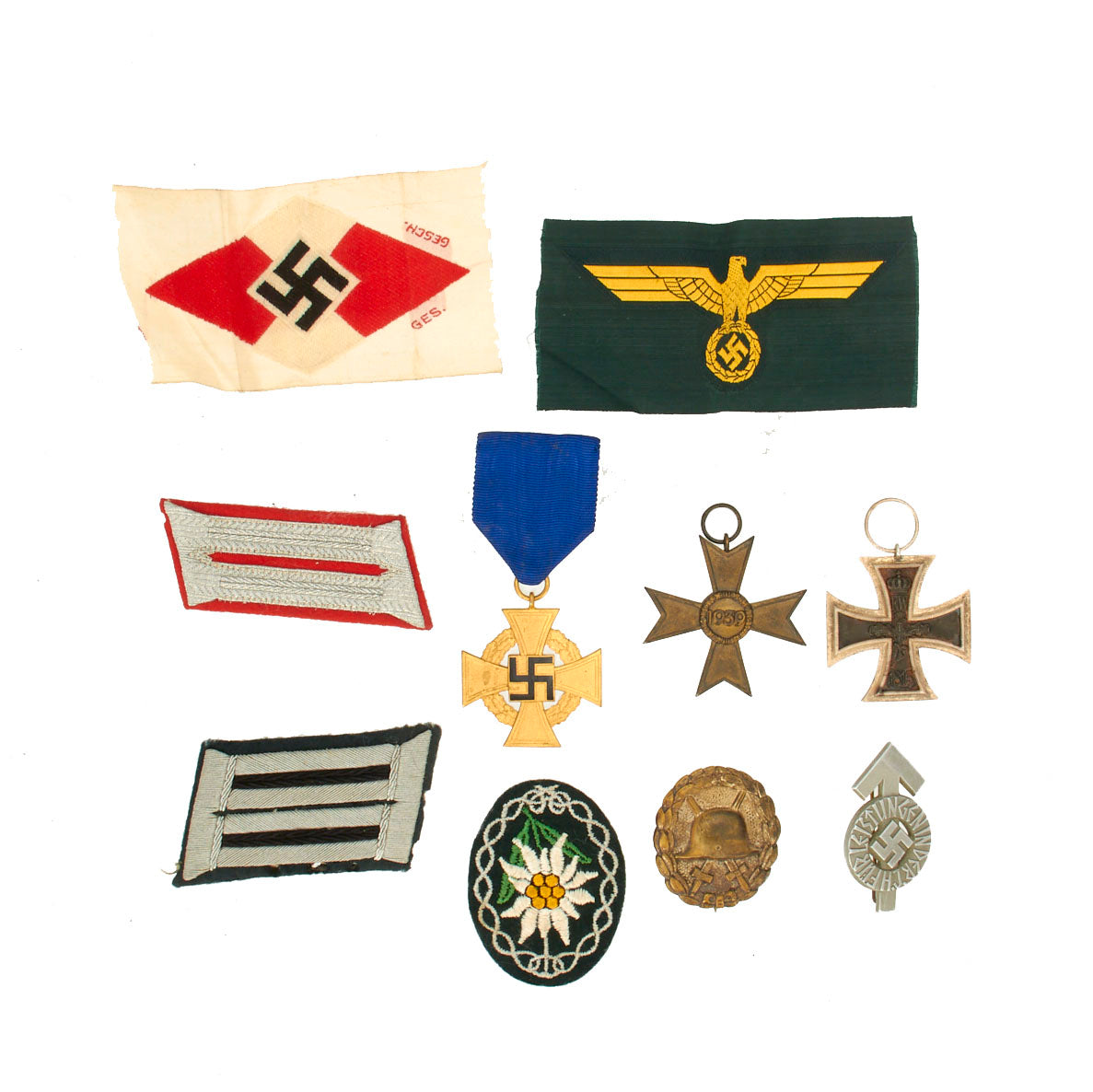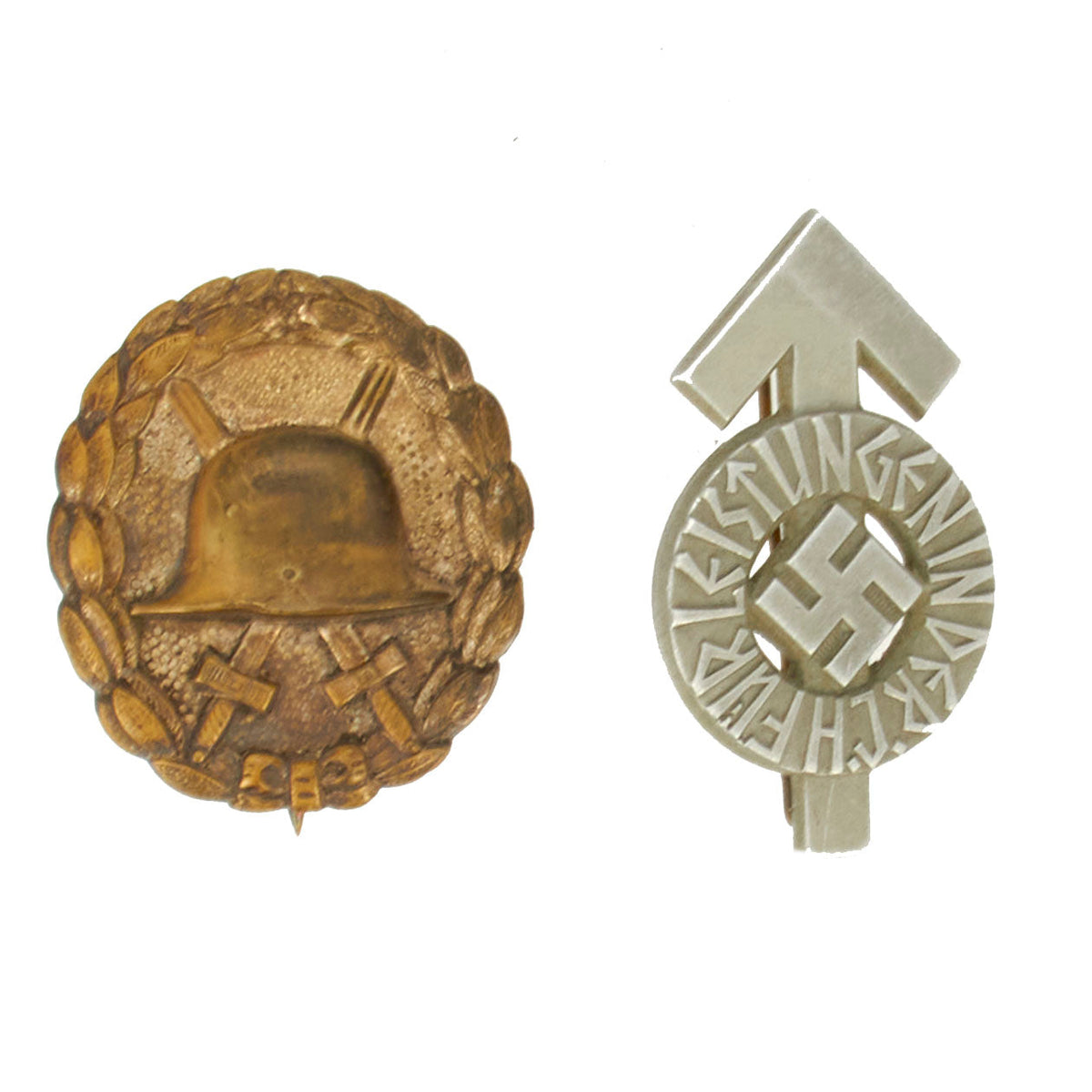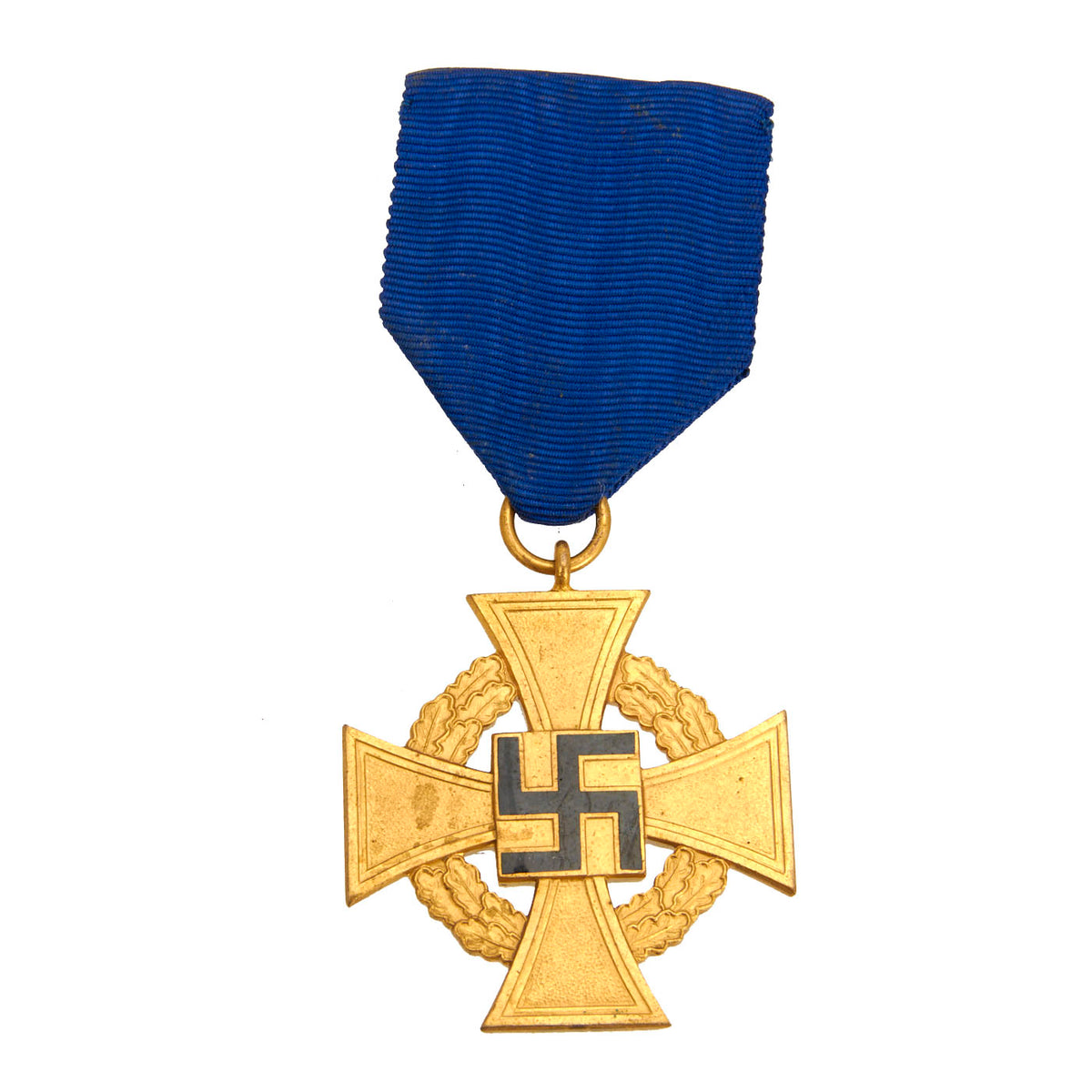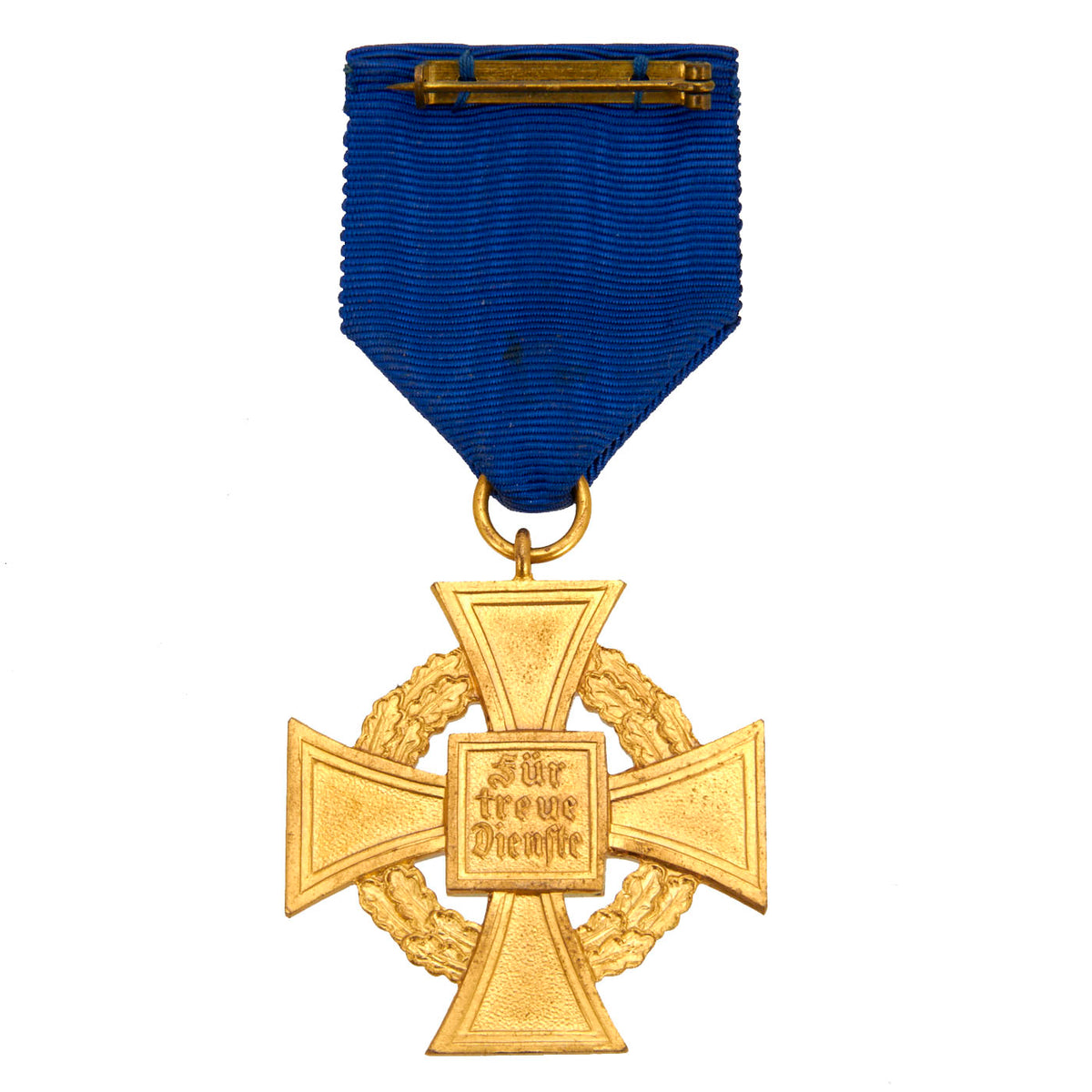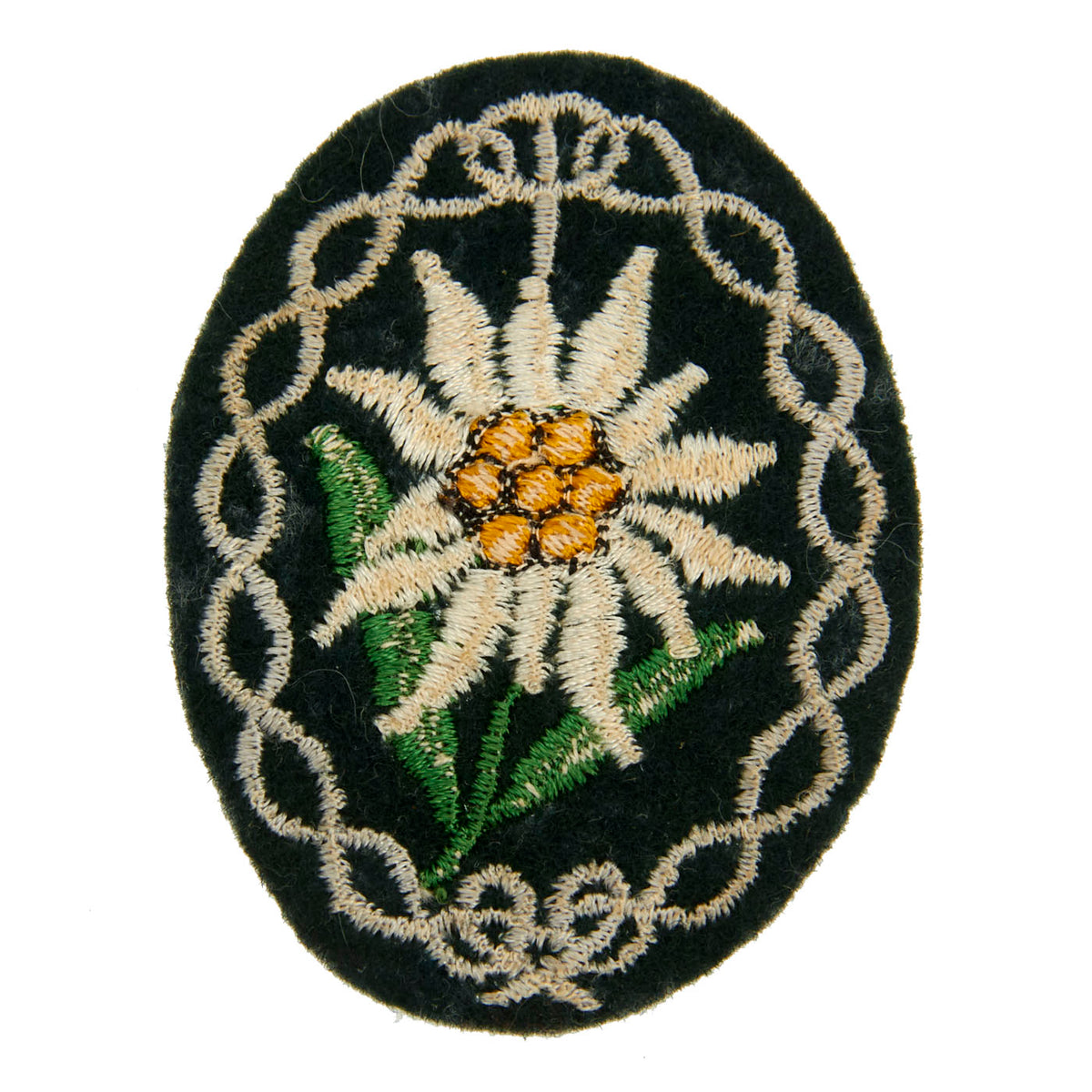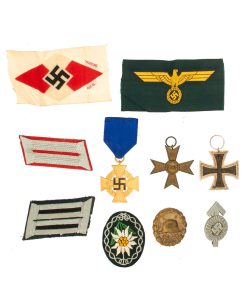Original German WWI & WWII Medal and Insignia Grouping with EKII, KvKII & More – 10 Items Original Items
$ 295,00 $ 118,00
Original Items: Only One Set Available. This is a very nice collection of German WWII Insignia & Awards, which was brought back from the European theater by a USGI after the war was concluded. It includes some a wide variety of medals and insignia, including a WWI Iron Cross 1914 2nd Class, a WWII War Merit Cross 2nd Class, WWI Gold Wound Badge, and more!
This lovely set includes:
– One Imperial German WWI Prussian Iron Cross 2nd Class 1914 (Eisernes Kreuz II. Klasse 1914) without ribbon. This fine example is in very good condition, with most of the black paint still present on the central cross on both sides. There is a bit of rusting at the top of the cross on both sides where the black paint has worn away.
– One German WWII War Merit Crosses 2nd Class without Swords (for actions not related to combat). It still has much of the original gold wash, but does not have the ribbon.
– One Imperial German WWI Hollow Back 2nd Class Wound Badge in Silver. It is in very good condition, and is made from stamped brass, with a silver wash. The silver wash is missing from the raised portions of the badge, but can be seen on the reverse and the pebbled background.
– One German WWII Faithful Service Decoration 1st Class Cross for 40 Years of Service. Comes complete with the correct ribbon and pin, and is in very good condition.
– One German WWII Kriegsmarine Navy Küstenartillerie (Coastal artillery) unissued BeVo Wehrmachtadler Breast Eagle – Gold Yellow thread on green.
– One German WWII Heer Gebirgsjäger Mountain Trooper Cloth Sleeve Badge – Edelweiß.
– One German WWII HJ National Youth Organization BeVo Diamond Insignia – Unissued. It still has the original paper RZM tag on the back.
– One German WWII HJ National Youth Organization Proficiency Badge.
– One German WWII Heer Artillery Officer Dress Kragenpatte (Collar Tab).
– One German WWII Heer Pioneer Officer Field Kragenpatte (Collar Tab).
A wonderful totally genuine grouping perfect for the German Medal and Insignia collector.
German WWI Prussian Iron Cross 2nd Class:
Established by Frederick William in 1813 for gallantry in action, the decoration was revived several times for later conflicts. The bulk of the issues are divided into 1st and 2nd class versions, but a rare and superior ‘Grand Cross’ was also awarded for successful field commanders. During WW1 the lower decoration was freely awarded with 5½ million second class types issued. Originally, the Iron Cross was an award of the Kingdom of Prussia, however given Prussia’s pre-eminent place in the German Empire formed in 1871, it became an award for all of Germany.
The basic design of the WW1 crosses is a central cross patee struck from iron and mounted in a silver frame which has a raised crenulated decorative border. The obverse of the cross bears the date 1914 under a crowned ‘W’ monogram. Reverse bears an oak leaf cluster with the date of the decoration’s institution, 1813 underneath – the crowned initials of Frederick William are in the top arm above the oak leaf cluster. Suspension for second-class types is by means of a ring, and frequently this ring bears a maker’s stamp.
Please examine the edge seam for authentication, which is not present on reproductions. Iron crosses were commonly constructed from an iron core sandwiched in a surrounding two part silver frame, normally the seam of these two silver parts is visible around the edge of the cross as is seen on this fine example.
War Merit Cross 2nd Class (Kriegsverdienstkreuz or KvK) without Swords (for actions not related to combat)
This was a decoration of NSDAP Germany during the Second World War, which could be awarded to military personnel and civilians alike. By the end of the war it was issued in four degrees, and had a related civil decoration. It was created by Adolf AH in October 1939 as a successor to the non-combatant Iron Cross which was used in earlier wars. The award was graded the same as the Iron Cross: War Merit Cross Second Class, War Merit Cross First Class, and Knights Cross of the War Merit Cross. The award had two variants: with swords given to soldiers for exceptional service “not in direct connection with combat”, and without swords for meritorious service to civilians in “furtherance of the war effort”. As with the Iron Cross, Recipients had to have the lower grade of the award before getting the next level.
The German Wound Badge (Verwundetenabzeichen) was instituted by Kaiser Wilhelm II on 3 March 1918 during the First World War to recognize those wounded in the conflict. It was designed using a World War One style Imperial German Stahlhelm helmet as the main motif. The helmet was set on top two crossed swords against a pebbled background and surrounded by a laurel leaves wreath.
The Wound Badge Awards came in three different types of grades representing the amount , or severity, of wounds received. The first grade, the Black Wound Badge was awarded for 1 to 2 wounds received in combat. The Silver Grade was awarded for 3 to 4 wounds, and finally the Gold Grade for 5 or more wounds, total disability, or death.
Faithful Service Decoration First Class Cross for 40 Years of Service – A fullsize frosted gold cross with an oak leaf wreath and black enameled swas on original ribbon.
The Civil Service Faithful Service Medal (Treudienst-Ehrenzeichen für Beamte Angestellte und Arbeiter im öffentlichen Dienst) was a NSDAP Germany medal of honor that was founded on 30 January 1938, in two grades, to reward civilians and military in the employ of the German public services for long and faithful service.
All officials, employees, and laborers at any level of the public service (local, regional or national) who complete 25 or 40 years service were eligible. The second class award was for 25 years of service was a silver cross, with a silver wreath and a black enameled swas in the center of the cross. The first class award was for 40 years of service was a gold cross, with a gold wreath and a black enameled swas in the center of the cross.
The reverse of both classes was stamped with Für treue Dienste (For faithful Services). in German black letter typeface. The ribbon for the medal is cornflower blue.
Fast Shipping with Professional Packaging
Thanks to our longstanding association with UPS FedEx DHL, and other major international carriers, we are able to provide a range of shipping options. Our warehouse staff is expertly trained and will wrap your products according to our exact and precise specifications. Prior to shipping, your goods will be thoroughly examined and securely secured. We ship to thousands clients each day across multiple countries. This shows how we're dedicated to be the largest retailer on the internet. Warehouses and distribution centres can be located throughout Europe as well as the USA.
Note: Orders with more than one item will be assigned a processing date depending on the item.
Before shipping before shipping, we'll conduct a thorough inspection of the items you have ordered. Today, the majority of orders will be delivered within 48 hours. The delivery time will be between 3-7 days.
Returns
The stock is dynamic and we cannot completely manage it because multiple stakeholders are involved, including our factory and warehouse. So the actual stock may alter at any time. It's possible that you may not receive your order once the order has been made.
Our policy is valid for a period of 30 days. If you don't receive the product within 30 days, we are not able to issue a refund or an exchange.
You can only return an item if it is unused and in the same state as the day you received it. You must have the item in its original packaging.
Related products
Uncategorized
Band of Brothers ORIGINAL GERMAN WWII Le. F.H. 18 10.5cm ARTILLERY PIECE Original Items
Uncategorized
Uncategorized
Uncategorized
Uncategorized
Uncategorized
Angolan Rebel 1970s era 60mm Inert Display Mortar from Angolan Civil War Original Items
Uncategorized
Armoured Fighting Vehicles of the World: AFVs of World War One (Hardcover Book) New Made Items
Uncategorized
Uncategorized
Armored Burgonet Helmet & Polearm from Scottish Castle Leith Hall Circa 1700 Original Items
Uncategorized
Uncategorized
Uncategorized
Uncategorized
Uncategorized
